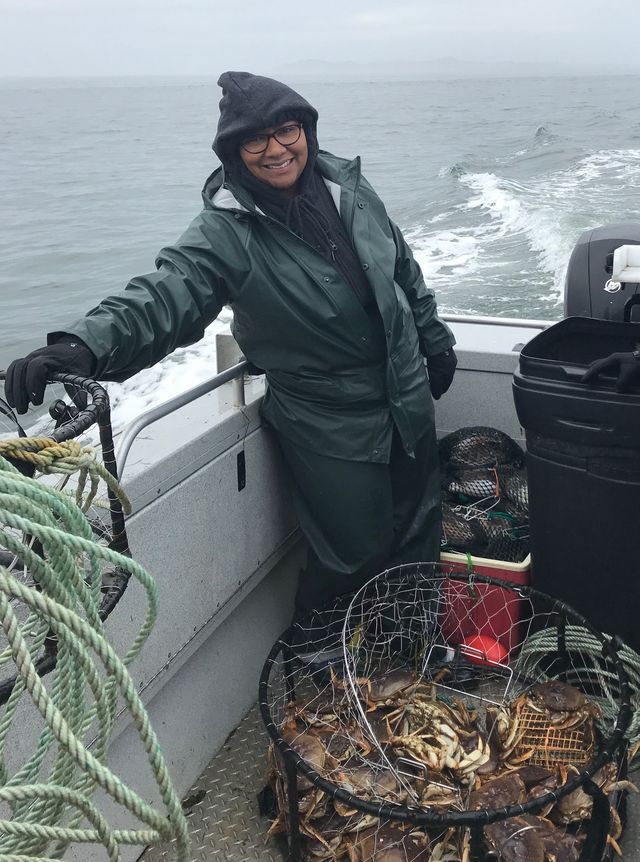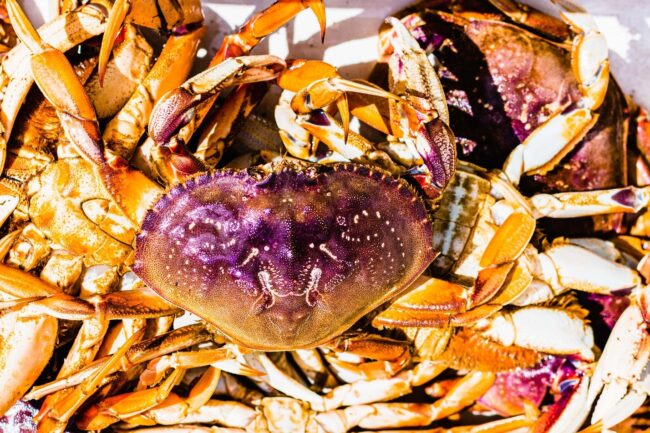The Oregon Coast is famous for its breathtaking views, rugged coastline, and abundant seafood. One of the most popular activities here is crabbing, a rewarding experience that lets you connect with the ocean while bringing home delicious, fresh seafood for the family table. In this guide, we’ll explore the essentials of crabbing on the Oregon Coast, from obtaining the right permits to using the best techniques for a successful catch. Whether you’re a local or just visiting, Jennifer Yruegas will help you make the most of your crabbing adventure and bring the freshest seafood from the ocean to your table.
Why Go Crabbing in Oregon?
Oregon’s coastlines are home to a thriving population of Dungeness and red rock crabs, making it an ideal destination for crabbing enthusiasts. The mild climate, nutrient-rich waters, and well-managed fisheries ensure that crabbing remains plentiful year-round. The thrill of catching your own crabs, paired with the satisfaction of a fresh seafood feast, has made crabbing a beloved pastime for locals and visitors alike.
Getting Started: Permits and Regulations
Before heading out, it’s essential to familiarize yourself with the regulations and obtain a permit.
- Recreational Shellfish License: Anyone age 12 and older needs a recreational shellfish license to go crabbing in Oregon. This license is required for both residents and non-residents. Licenses can be purchased online through the Oregon Department of Fish and Wildlife (ODFW) or from local sporting goods stores.
- Daily Bag Limits: Crabbing regulations limit the number of crabs you can catch each day. The daily limit for Dungeness crab is typically twelve males, while red rock crab has no daily limit, though restrictions on size and sex may still apply. Always check for current regulations, as they can vary depending on location and time of year.
- Keep It Legal: Ensure that your catch meets the minimum size requirements and that you’re only taking male Dungeness crabs, as harvesting females is prohibited. Inspect each crab’s underside to identify its sex; males have a narrow, pointed apron, while females have a wider, rounded one.
Choosing the Right Equipment
Crabbing equipment can be as simple or as sophisticated as you like. Here are some essential tools to get started:
- Crab Pots and Rings: Crab pots, usually made of wire mesh, are larger and more durable, making them ideal for crabbing from docks or boats. Crab rings are lighter, easier to transport, and suitable for shorter crabbing sessions from the shore.
- Bait: Crabs are scavengers and will eat almost anything, but some baits work better than others. Fresh chicken, fish carcasses, or squid are popular choices and can be easily tied inside your trap or ring.
- Tongs and Buckets: When handling crabs, use long-handled tongs to avoid pinches, and bring a sturdy bucket to hold your catch. It’s best to keep the crabs in a bucket with a bit of seawater to maintain their freshness until you’re ready to transport them.
Best Techniques and Timing for Crabbing
To increase your chances of a bountiful catch, follow these tips:
- Best Times to Go Crabbing: Crabs are most active during incoming and outgoing tides, as the water movement brings food closer to shore. Check tide charts to plan your crabbing trip around these times. Early morning and late afternoon are often ideal.
- Setting Your Trap: If you’re using a crab pot, set it in the water and allow it to soak for 15 to 45 minutes before pulling it up to check. For crab rings, leave them in for 10 to 15 minutes and then pull quickly to avoid losing any crabs.
- Location Matters: Crabs prefer sandy, muddy bottoms near estuaries and bays, where the nutrient-rich waters attract them. Popular spots on the Oregon Coast include Nehalem Bay, Tillamook Bay, Yaquina Bay, and Coos Bay.
Preparing and Cooking Your Catch
Once you’ve caught your crabs and brought them home, it’s time to prepare your seafood feast. Fresh crab is a treat, and with a few simple steps, you can turn your catch into a delicious meal.
- Cleaning and Cooking: Fill a large pot with enough water to cover the crabs, then bring it to a rolling boil. Add salt to the water, about 1/4 cup per gallon, and drop the live crabs into the boiling water. Cook for 12-15 minutes until the shells turn a bright orange-red.
- Cooling and Cracking: After cooking, allow the crabs to cool in cold water before handling. Once they’re cool, you can crack open the shells and remove the meat. Crab crackers or nutcrackers can help with tougher shells, while seafood forks are perfect for getting to the meat in smaller spaces.
- Serving Suggestions: Freshly cooked crab can be enjoyed on its own or with melted butter and lemon. It’s also a great addition to salads, pastas, and seafood stews. For an Oregon-inspired twist, try serving the crab with fresh local ingredients like Oregon coast greens, garlic, and a sprinkle of sea salt. My personal favorite is adding a bit of Cajun spice to lively up the taste.
Tips for Keeping Your Catch Fresh
If you’re crabbing in the morning and plan to eat your catch later in the day, it’s important to keep the crabs fresh until you’re ready to cook.
- Keep Them Cool: Place crabs in a cooler with ice packs and damp newspaper to keep them fresh but not submerged in fresh water, which can kill them.
- Cook As Soon As Possible: Crab meat spoils quickly, so it’s best to cook the crabs on the same day you catch them. Once cooked, the meat can be refrigerated for a couple of days or frozen for longer storage.
Sustainable Crabbing Practices
Oregon’s Dungeness crab fishery is one of the most sustainable fisheries in the country, thanks to strict regulations that help preserve crab populations. Here’s how you can contribute to the sustainability efforts:
- Respect Limits: Abiding by daily catch limits and size restrictions helps ensure crab populations remain healthy.
- Handle Carefully: Be mindful of how you handle and release any undersized or female crabs, as mishandling can injure or kill them, affecting future populations.
- Leave No Trace: After a day of crabbing, make sure to clean up your area, including removing bait remnants, discarded lines, or other waste that could harm marine life.
Enjoying the Experience

Crabbing on the Oregon Coast offers a unique combination of adventure, relaxation, and reward. There’s something deeply satisfying about catching, cooking, and eating food that you’ve sourced yourself. As you become more skilled, you’ll find that crabbing can be a fun group activity for family and friends or a peaceful solo excursion with only the sound of the waves and seagulls for company.
Whether you’re a novice or a seasoned crabber, crabbing on the Oregon Coast is an experience that brings you closer to nature and lets you savor the taste of the Pacific in every bite. By following these tips and practicing sustainable crabbing, you’ll not only enjoy a seafood feast but also contribute to the conservation of Oregon’s marine ecosystems for generations to come.
